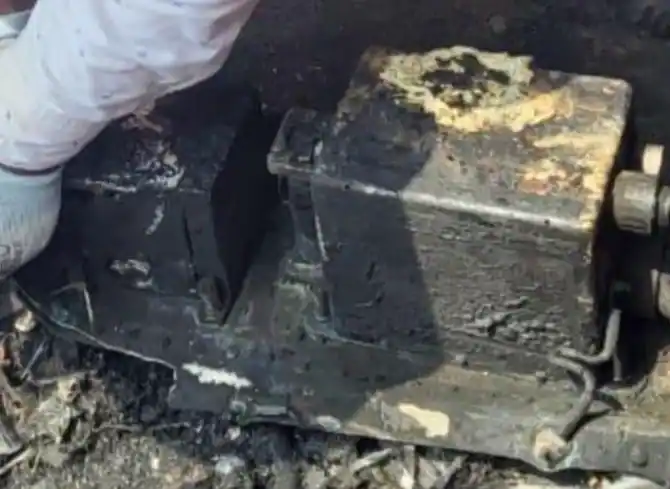
Air India 787 crash: AAIB expects to receive extracted flight data from US in a week
How did your country report this? Share your view in the comments.
Diverging Reports Breakdown
AAIB expects data from Air India’s crashed flight’s digital flight data recorder to be provided by US authorities in a week
The Aircraft Accident Investigation Bureau (AAIB) expects to receive crucial flight data from the black box of Air India’s ill-fated Boeing 787 by June 26. The digital flight data recorder (DFDR) from flight AI 171, which crashed on June 12, killing nearly 270 people, is currently under analysis by the US-based National Transportation Safety Board (NTSB) The cockpit voice recorder (CVR) has also been sent along for evaluation. Experts point out that possible causes under scrutiny include engine failure due to bird strikes or fuel contamination, improper flap extension, maintenance errors, or incorrect crew actions that might have cut fuel supply to both engines. A team of Indian technicians will accompany the device to the US to observe the retrieval process and understand how data is extracted without compromising the equipment. Many aviation experts have pointed out that this incident is remarkably unusual.
The Aircraft Accident Investigation Bureau (AAIB) expects to receive crucial flight data from the black box of Air India’s ill-fated Boeing 787 by June 26, senior government officials told Moneycontrol.
The digital flight data recorder (DFDR) from flight AI 171, which crashed on June 12, killing nearly 270 people, is currently under analysis by the US-based National Transportation Safety Board (NTSB). The cockpit voice recorder (CVR) has also been sent along for evaluation.
Story continues below Advertisement Remove Ad
“Data from the digital flight data recorder will be provided to AAIB in a week’s time. By June 26, the NTSB should be able to extract and transmit the data,” said one official. A team of Indian technicians will accompany the device to the US to observe the retrieval process and understand how data is extracted without compromising the equipment.
The DFDR was initially examined at AAIB’s new laboratory in New Delhi, but the bureau decided to send it overseas after determining that further attempts in India to extract the data risked permanent data loss.
“AAIB investigators were not able to ascertain the absolute integrity of the black boxes, hence the decision of sending them to an overseas facility was taken,” a second official said. The decision also reflects the physical damage sustained by the recorders and the complexity of the data analysis required in the investigation.
AAIB inaugurated its new lab on April 9 at its office in Delhi, which was set up with an investment of Rs 9 crore. The newly established lab, developed with Hindustan Aeronautics Ltd (HAL), significantly boosts the AAIB’s capacity to repair black boxes, extract data, and perform detailed accident analyses with improved precision.
Previously, the AAIB relied on an outdated black box lab operated by the Directorate General of Civil Aviation (DGCA), which lacked essential capabilities for effective data recovery. This limitation was a key factor behind the need to send several black boxes from serious accidents to laboratories abroad for analysis..
Emails sent to the AAIB, Ministry of Civil Aviation and DGCA remained unanswered till the time of publishing this report.
Story continues below Advertisement Remove Ad
Story continues below Advertisement Remove Ad
Parallel probes underway
Multiple international bodies — including the NTSB, the Federal Aviation Administration (FAA), and the UK Civil Aviation Authority (CAA) — are conducting parallel probes into the crash, with support from Boeing and engine-maker GE Aerospace.
The incident has prompted a broader review of the Boeing 787 fleet’s airworthiness, which will hinge on the findings of these investigations.
The focus of investigators is on understanding how a potential twin-engine failure occurred — an exceedingly rare scenario. Preliminary observations indicate the aircraft maintained a steady descent without attempting corrective manoeuvres, which experts say is inconsistent with typical single-engine failure responses.
Theories under consideration include maintenance errors, improper flap deployment, fuel contamination, or inadvertent crew actions. Bird strikes have largely been ruled out due to the large diameter of the 787’s engines.
Preliminary report expected in 30 days
Under global aviation guidelines set by ICAO, a preliminary report is expected within 30 days, with a final report due within a year. Investigators are relying heavily on the flight data and cockpit voice recordings to reconstruct the aircraft’s final moments.
The Boeing 787 is equipped with Enhanced Airborne Flight Recorders that track extensive parameters — including engine performance, fuel flow, gear and flap settings, and pilot communications — which could provide clarity on what led to the catastrophic failure.
Despite the scale of the tragedy, US officials stated last week that no immediate safety issue had been found that warranted a grounding of Boeing 787 operations.
